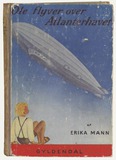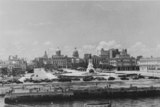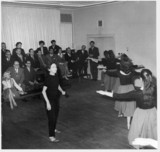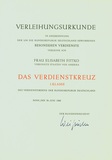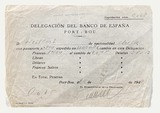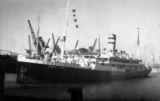Children and adolescents in exile
According to UNHCR statistics, 35 million of the approximately 82 million people worldwide who left their countries of origin in 2020 were children and adolescents aged under 18. The numbers who left their countries during the Nazi era can only be estimated.
Children’s and young adult literature in exile
Many writers of books for children and adolescents struggled to get their work published in exile. As exiled children and young people were often quick to learn the language of their country of refuge, opportunities to have (old and new) works translated were also particularly important.
Cuba
The Caribbean country of Cuba accepted 6,000 to 8,000 refugees from Europe before it entered the war in 1941. Most of them were Jews. Almost all who sought refuge in Cuba were waiting for an onward journey to the USA.
Czechoslovakia
After the Nazis seized power in 1933, many of those who were politically persecuted first of all fled to the neighbouring Czechoslovakia. As Germans did not require a visa, it was relatively simple to enter the country. By 1938, between 10,000 and 20,000 exiles had fled into Czechoslovakia, among them about 5,000 Jews.
Dance in Exile
For artists, exile often means leaving their work or parts of it behind. For example, the buildings of an architect remain immovable in the country they have turned their back on.
Denaturalisation
A person becomes a citizen of a state either by origin or through a bureaucratic naturalisation procedure. A citizen is typically endowed with certain rights, such as the right to vote and the right of abode. If a person is “denaturalised”, he/she loses these rights together with his/her citizenship and may be expatriated.
Dominikanische Republik
In July 1938, the Évian Conference was held at the behest of American president Roosevelt to devise solutions for the ever-increasing flow of refugees after the annexation of the Sudetenland and Austria. Among conference attendees, only the Dominican Republic declared itself willing to accept up to 100,000 Jews.
Escape help
Human smugglers, migrant smugglers, escape helpersThe more hopeless it is for the persecuted to escape by legal means, the more important it becomes to help them flee. Escape helpers – individuals or organisations – often have to resort to illegal means to help people escape: they fake passports, pay bribes, make financial transactions, organise hiding places and secret border crossings.
Escape routes: the Pyrenees
After the defeat of France in the summer of 1940, the border between France and Spain, which stretches the length of the Pyrenees, became the most important escape route out of France. Since the French Atlantic coast was occupied by the Germans, most escapees took the route along the Mediterranean coast.
Escape routes: the Serpa Pinto
In May 1940, the Portuguese shipping company Companhia Colonial de Navegacão sent its newly acquired, renovated and converted steamer Serpa Pinto on its maiden voyage. The vessel had originally been built in Belfast in 1914 and had in the meantime been used for a multitude of purposes.


